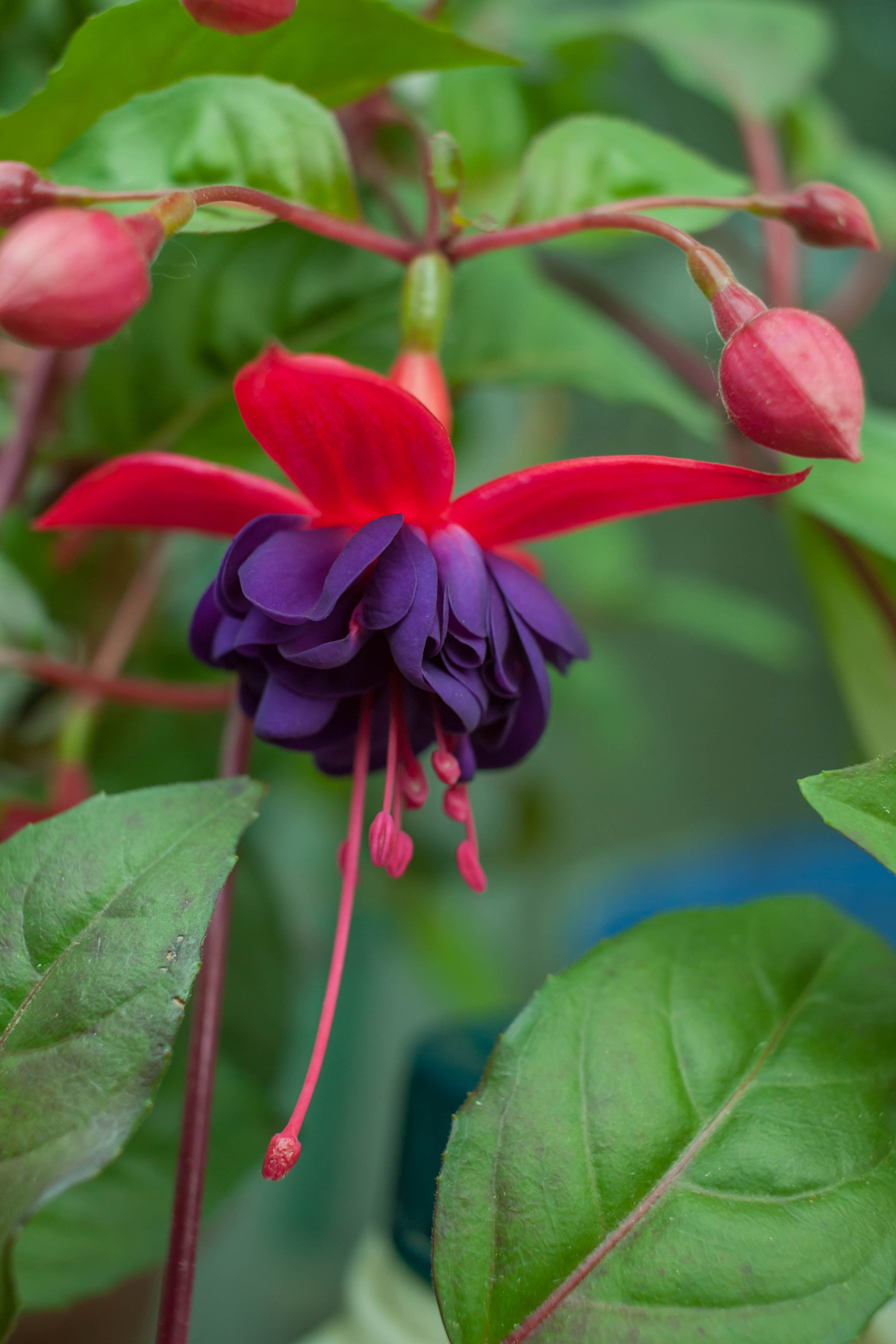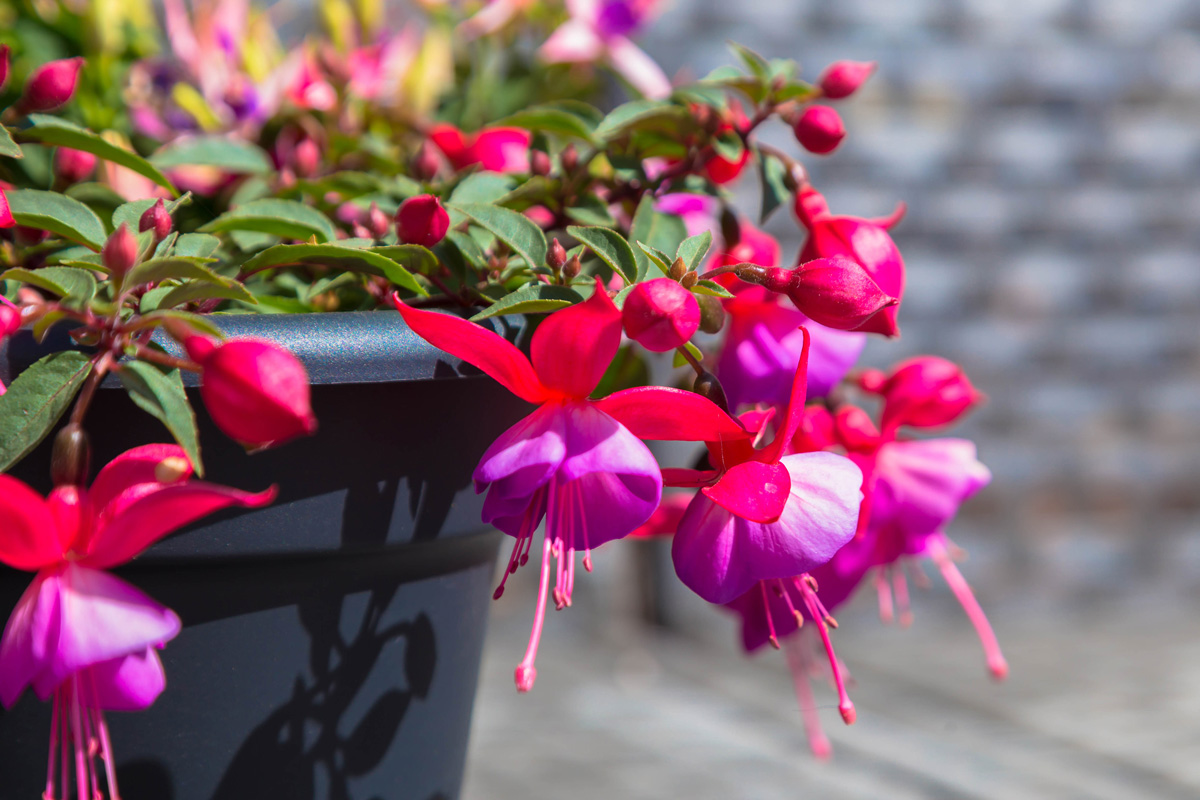Fuchsia is an incredible plant. You can use it in gardening and cooking. However, some instances are inevitable, such as when your fuchsia is dying. It is a good thing you reached us. We have thoroughly researched what you can do to revive your dying fuchsia.
There are so many reasons why your fuchsia plant is dying. And to revive a dying fuchsia, you can do things such as providing enough water and sunlight, fertilizing, and pinching. Additionally, it would be best not to let pests infest them.
Even if you notice that your fuchsia is dying, you can still perform some methods to try to revive it. And if you want to know them in detail, we suggest you keep reading. Doing so might also answer some of your additional questions.

What Are The Factors That Cause Fuchsia Plants To Die

To grow, fuchsia plants require enough water. Your fuchsia is likely wilting as a result of not receiving enough moisture. Your plant may need additional water throughout the summer, usually twice a day, especially if it is sensitive to extreme wind and excessive sunlight.
Overwatering may also be the cause. The plant may wilt if its roots lack enough drainage and it receives too much water. You avoid this and guarantee that the soil is well-drained, make sure to have at least one drainage hole when planting fuchsia plants.
Several viral diseases, such as impatiens necrotic spot virus and tomato spotted wilt, can also affect fuchsia plants. Both of these viruses are because of the destructive thrips, which are difficult to eradicate because they hide in buds, blooms, and other difficult-to-reach places.
Another potential cause of the wilting issue could be receiving too much sunshine. Although a little early sunlight is acceptable, many plants cannot tolerate excessive afternoon sunlight.
How To Recover A Dying Fuchsia Plant
- First, reduce the plant's size by half. By trimming its sluggish shoots, you can preserve the ragged fuchsia.
- In order to provide the soil conditions needed for healing, it would be best to move the fuchsia plant into a different gardening pot. The gardening pot should have enough holes for proper drainage.
- Put in an acidic azalea mix in place of the potting soil.
- You should submerge the fuchsia plant in cool water for a long time or until it becomes heavy again. Keep in mind that you should avoid utilizing lukewarm or hot water.
- After that, drain the water through the holes in the container's bottom. It is crucial that you complete this step and not skip it.
- Enhance the soil with fertilizer. Nitrogen fertilizer is an excellent choice because it promotes lush plant development. As the plant recovers its attractiveness, it also helps it to bloom once more.
- Try to avoid placing your plant in direct sunlight-emitting locations. Fuchsia plants can recover slowly but steadily with the help of bright indirect light.
- To maintain healthy pest-free roots, ensure the area has excellent air circulation so the excess moisture can escape.
- Every day, check the plant's buds and remove those that have turned black.
- Keep an eye on your plant and water it daily.
- Once it has expanded, begin pinching to produce new blossoms. Pinch until April, at which point you should cease to allow your flowers to bloom. Don't forget to remove the former to prevent older ones from consuming energy from newer ones.
What To Do If Pests Infest Your Fuchsia Plants
Keep a watchful eye out for pests, especially scale, aphids, thrips, and spider mites, which can take aggression to the plant and cause it to wilt. If these pests attack your fuchsia plant, use natural insects, such as ladybugs, to get rid of them. However, make sure they are under control.
You can use insecticidal soap to get rid of pests and damage if your plant has already been harmed. Avoid using it on days with high temperatures because doing so could cause the fuchsia plants' leaves to burn, causing more harm.
How To Take Care Of Fuchsia Plants

The amount of water your fuchsia plant needs also depends on the environment it is growing in, whether it is in a pot or in the ground.
Climate is the main issue in watering because it greatly affects how frequently your fuchsia plants need watering. You should water the plant more often if your summers are hot and dry. You won't need to water as frequently in cooler climates with rains.
Compared to plants planted in the ground, fuchsia plants in pots and containers will require more frequent watering because their roots are fully reliant on the moisture in the pot.
During the height of summer, give your fuchsias daily watering, if not twice daily. However, before you start watering, you should also consider the state of the soil.
Fucias are native to regions with moderately high temperatures. Fuchsia plants can only tolerate warm regions since they cannot survive cold ones. Before the first frost, you should move them inside your home.
It is possible to bring your fuchsia plant inside. Maintain a temperature of about 50 degrees Fahrenheit. The plant will not develop flowers during this time; instead, it will concentrate on surviving. For the growing season that is about to happen, it will be conserving its energy.
To get ready to go back outdoors, cut your plant to about half its original size about a month before the last frost and gradually expose it to indirect sunlight. Reposition it outside in its original location after the last frost.
3. Humidity
An average quantity of humidity is necessary for fuchsia growth. But you must watch the humidity level; if it is too high, the plants will finally perish.
A too-dry climate is also unsuitable for the growth of fuchsias. Get a misting spray to maintain the health of these plants if your area has a dry climate.
4. Light
The fuchsias will wilt and fall off if they receive too much direct sunlight. When it is not at its height in the morning or evening, it is ideal for giving the plant a small amount of direct sunlight.
You should shield the plant from the afternoon sun as much as possible. The amount of sunlight the plant can tolerate will also base on the soil's temperature. Fuchsia plants want to have cold soil, and they can withstand more sunlight.
5. Pruning
It would be best to clip any dead or injured fuchsia to guarantee the new growth is flourishing. Flowers only appear on fresh growth. Thus cutting back on old growth will actually accelerate the emergence of new flowers.
You will need to prune hardy types' stems just above the ground in late spring. It is preferable to delay starting the trimming procedure until you start to notice fresh growth.
To help the plant grow and bloom, don't forget to pinch the tops of the shoots. As a result, your fuchsia plants will provide their most remarkable results.
Although you can also top side branches, you should exercise caution because too much topping will prevent the plants from blossoming. You should only do this if you want to cultivate a bushy, far-flung plant.
6. Pests and Diseases
Keep a watchful eye out for any pests or illnesses that may affect your fuchsia plant because it is much easier to deal with them if you discover them early. You can purchase effective insecticides in a local home and garden store nearby.
What Is Causing The Fuchsia Leaves To Turn Brown
Plant spots, curling leaves, and delayed growth are signs of a fungal or viral disease. Dehydration and viral or fungi infection are the two primary causes of the leaves turning brown.
Browning leaves could potentially be fuchsia rust because of a fungus known as Pucciniastrumepilobii. The fungus often appears on plants growing outside between July and September, although it can infect greenhouse fuchsias at any time of the year.
When you notice spotted leaves, flowers with unusual colors, or mushy roots, your fuchsia plants may have a fungus infection. Overwatering is typically the source of this disease.
The leaves of plants may become yellow and fall off due to a lack of nutrients, specifically a magnesium shortage.
How Long Is The Lifespan Of Fuchsia Plants?

Fuchsia plants have a short lifespan. The longevity of a fuchsia plant is several years when given the right care and attention. Additionally, there are some cases where the same fuchsia plant has lived for more than 25 years.
Summary
You can't just give up on your dying fuchsia plant since there are available methods that you can perform to revive them. We highly suggest you follow everything we discussed above to get your fuchsia alive and kicking again.
We hope we have correctly helped you with this post. If you want more of our assistance, you can check these posts out!
How Much Sun Does Rosemary Need? [And Can It Get Too Much?]
Can Lettuce Survive A Freeze? [And How To Prevent It From Dying]
